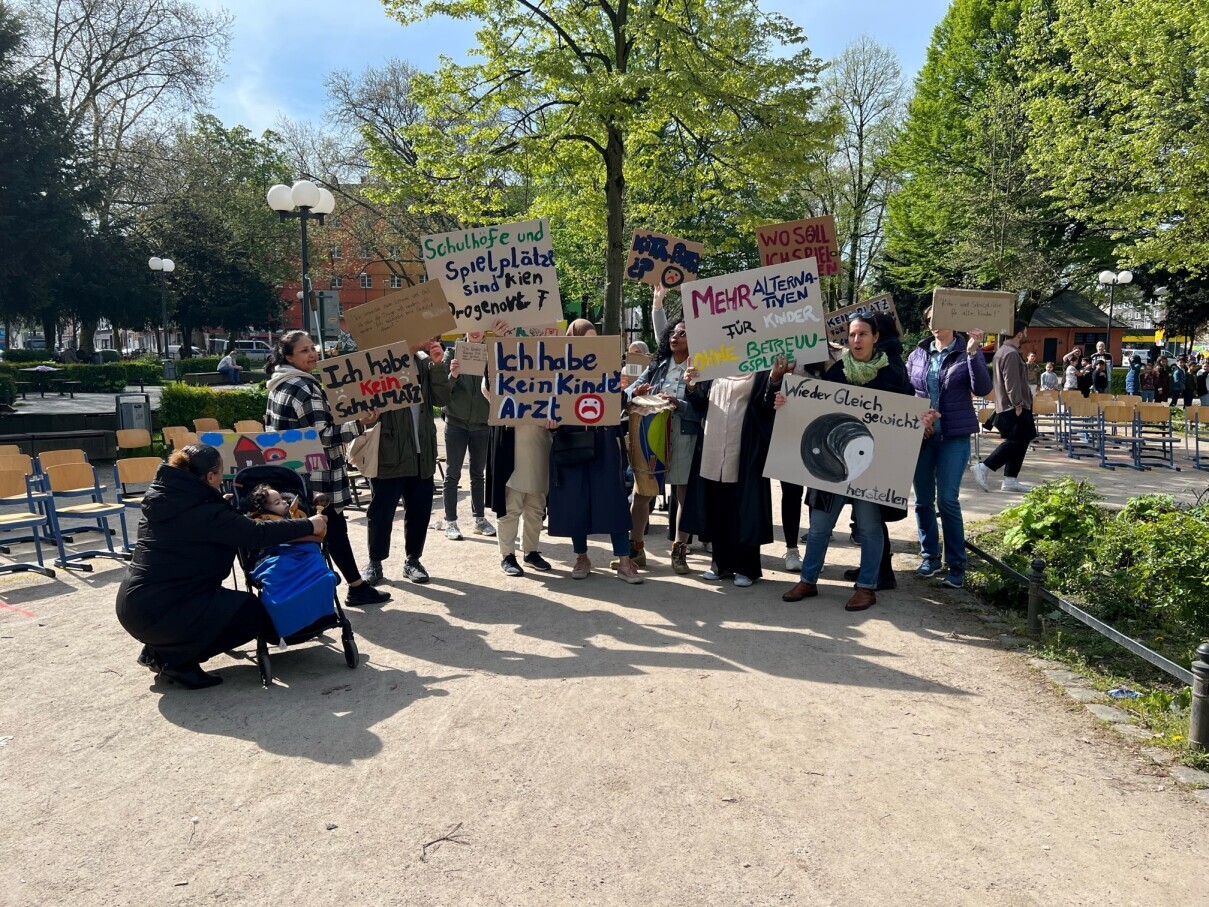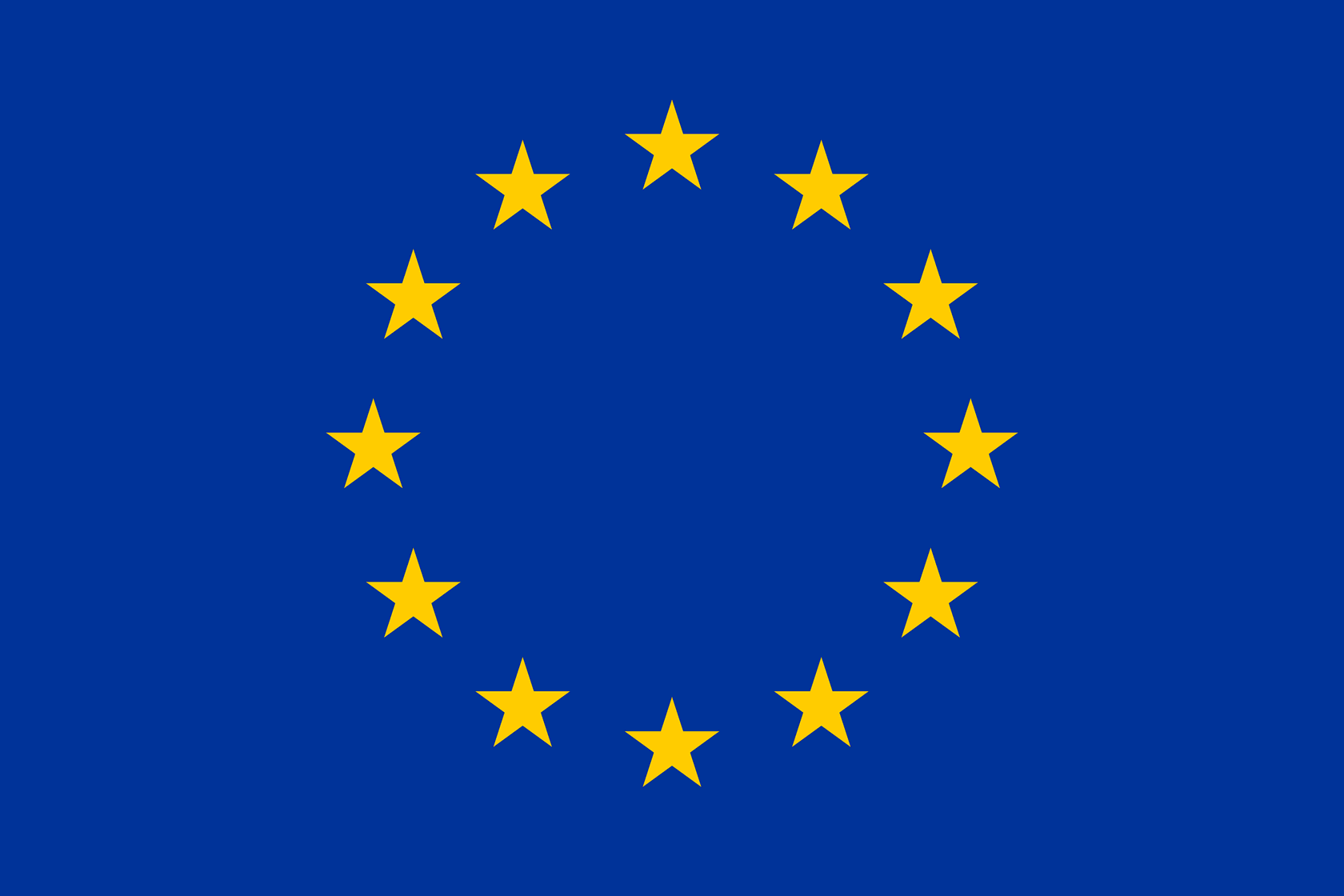Dortmund-Nordstadt

text by Cornelia Tippel (ILS) and Dennis Zilske (Planerladen)
edited by Mary Hogan (KUL)
Platform Building Description
The starting point of the platform-building process in Dortmund-Nordstadt was a shortage in several child and youth related infrastructures such as school places, places in daycare facilities for children and pediatricians affecting mostly newcomer children and youth. Apparently, this shortage was not reflected in media cover-age or public debate. Thus, the platform-building process in this site resulted in a core event where 400 school chairs were set up at a central square in Nordstadt aiming to raise awareness for the issue and bring it to the table. Further aims are bringing stakeholders together, making the stories of the affected families visible and showing appreciation for those actors dealing with the issues in their daily work.
The main event took place on 4th May 2023 at the Nordmarkt, a central square in Nordstadt. The event followed a thorough programme. The set-up of booths started early in the morning followed by bringing 400 school chairs to the middle of the square. Speeches of the chairman of the working group for child- and youth-related services, a local arrival infrastructure provider and the district mayor pointed to the shortages in child- and youth-related infrastructures and their consequences. Afterward there were informal gatherings on the square and visiting the booths of social organisations presenting themselves, followed by a speech and Q&A with the mayor of Dortmund. In his speech, the mayor pointed to the activities the city council had already started to solve the problem. While in the Q&A, the mayor responded in particular to the stories of families affected by the lack of school places. Press and media have been invited to the event to reach a wider audience.
edited by Mary Hogan (KUL)
Platform Building Description
The starting point of the platform-building process in Dortmund-Nordstadt was a shortage in several child and youth related infrastructures such as school places, places in daycare facilities for children and pediatricians affecting mostly newcomer children and youth. Apparently, this shortage was not reflected in media cover-age or public debate. Thus, the platform-building process in this site resulted in a core event where 400 school chairs were set up at a central square in Nordstadt aiming to raise awareness for the issue and bring it to the table. Further aims are bringing stakeholders together, making the stories of the affected families visible and showing appreciation for those actors dealing with the issues in their daily work.
The main event took place on 4th May 2023 at the Nordmarkt, a central square in Nordstadt. The event followed a thorough programme. The set-up of booths started early in the morning followed by bringing 400 school chairs to the middle of the square. Speeches of the chairman of the working group for child- and youth-related services, a local arrival infrastructure provider and the district mayor pointed to the shortages in child- and youth-related infrastructures and their consequences. Afterward there were informal gatherings on the square and visiting the booths of social organisations presenting themselves, followed by a speech and Q&A with the mayor of Dortmund. In his speech, the mayor pointed to the activities the city council had already started to solve the problem. While in the Q&A, the mayor responded in particular to the stories of families affected by the lack of school places. Press and media have been invited to the event to reach a wider audience.
Intended objectives
The main aim of the platform-building process in Nordstadt was to raise awareness for the issue of the shortage of school places and bring it to the table. Further aims are bringing actors affected by the issue together, making the stories of the affected families visible and showing appreciation for those actors dealing with the issues in their daily work.
The main aim of the platform-building process in Nordstadt was to raise awareness for the issue of the shortage of school places and bring it to the table. Further aims are bringing actors affected by the issue together, making the stories of the affected families visible and showing appreciation for those actors dealing with the issues in their daily work.
Target Groups
The event itself addressed on the one hand all those who are confronted with the deficits in their daily work and, against the backdrop of scarce resources, make an effort to ensure education and participation in the best possible way such as teachers, social workers. We aimed to address on the other hand families living in Nordstadt and affected by the shortages in one way or another. Local arrival infrastructurers were invited to actively take part in the event, e.g. in providing their own booth, creating their own messages or offering activities for children. Keynotes by the district mayor, the head of the working group on child- and youth-related facilities in Dortmund-Nordstadt, an arrival infrastructurer and the mayor of Dortmund, as well as conversations with families and Nordstadt inhabitants complemented the action.
The videos address a wider audience such as policy-makers and practitioners on various levels, journalists, scholars, and an interested public.
The videos address a wider audience such as policy-makers and practitioners on various levels, journalists, scholars, and an interested public.

Lessons Learned and Open Questions
- Neutrality vs. Activism: The academic partner’s affiliating institution emphasized a neutral stance for researchers, avoiding any appearance of activism. Consequently, Planerladen took on the activist role, while ILS focused on the scientific aspect during public presentations. This created a personal dilemma for the researcher, organizing an event without employer support.
- Pressures on Small Research Institutions: Small research organizations, reliant on public funding, face pressures to avoid negative implications that could jeopardize their survival. Balancing research goals with institutional constraints becomes crucial.
- Freedom of Science and Funding Dilemma: The question of whether public funding is used for criticizing public bodies highlights the delicate balance for organizations relying on such funding. Institutional positioning plays a significant role, even though individual researchers’ positions are predetermined.
- Unique Collaboration: The Nordstadt team’s combination of a research institution (ILS) and a social organization (Planerladen) was essential for the platform’s success within the ReROOT project.
- Organizational Roots: Organizations deeply rooted in Nordstadt acted as multipliers, reaching out to and inviting local inhabitants. Their connections to different groups ensured a diverse outreach.
- Family Preparation: Some organizations provided media courses and organized marches for families, giving them a voice. Families created posters with political messages, which were showcased at the event and included in videos.
- Approaching Families: Despite resource limitations, actively involving families was crucial. Sharing their participation approach was an effective strategy.
- Sustainability through Videos: Two video productions were created to preserve the event’s memory and convey its message. The emotional video has been presented at related events, spreading awareness about school place shortages in arrival neighborhoods.




